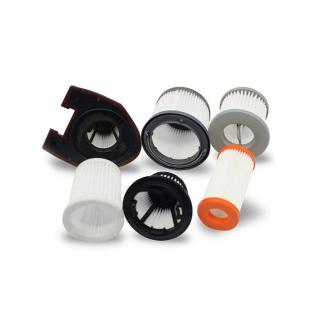The Surface
Acoustic Wave (SAW) Filter Market is gaining momentum, driven by its
pivotal role in enabling high-frequency signal processing for modern
communication technologies. Valued at USD 3.1 billion in 2022, the market is
projected to grow from USD 3.26 billion in 2023 to USD 5.2 billion by 2032,
registering a compound annual growth rate (CAGR) of 5.32% from 2024 to 2032.
SAW filters, known for their compact size, low cost, and
high performance, are integral components in devices like smartphones, IoT
devices, and communication infrastructure. The market’s steady growth reflects
their increasing adoption across industries focused on connectivity and
high-frequency applications.
Key Market Drivers
- Growing
Demand for Smartphones and IoT Devices
With the global proliferation of smartphones and IoT devices, SAW filters are in high demand to support efficient signal filtering for wireless communication. Their ability to enhance signal clarity and reduce interference makes them essential in these applications. - Expansion
of 5G Networks
The rollout of 5G technology has significantly boosted the need for SAW filters, which are vital for high-frequency spectrum management. As 5G adoption accelerates worldwide, SAW filters are increasingly used in base stations, antennas, and network equipment. - Advancements
in Consumer Electronics
The miniaturization trend in consumer electronics has further propelled the demand for SAW filters. From smartwatches to wireless earbuds, these devices require compact, efficient filtering solutions to ensure optimal functionality. - Rising
Applications in Automotive Electronics
The automotive industry’s shift toward connected and autonomous vehicles has created new opportunities for SAW filters. Applications such as vehicle-to-everything (V2X) communication, GPS systems, and advanced driver-assistance systems (ADAS) rely on SAW filters for precise signal processing. - Technological
Innovations in SAW Filter Design
Continuous improvements in SAW filter technology, such as enhanced frequency performance and the development of temperature-compensated SAW (TC-SAW) filters, are driving market growth. These advancements meet the growing demands of high-performance wireless communication systems.
Market Challenges
- Competition
from Bulk Acoustic Wave (BAW) Filters
The rising adoption of BAW filters for higher frequency ranges and improved power handling poses a challenge to SAW filter adoption, particularly in high-end applications. - Sensitivity
to Environmental Factors
SAW filters are more susceptible to temperature and environmental variations, which can impact their performance. Innovations to overcome these limitations are essential for broader adoption. - Price
Sensitivity in Emerging Markets
While SAW filters are cost-effective compared to alternatives, price sensitivity in emerging markets can still limit their adoption in certain sectors.
Regional Insights
- Asia-Pacific
The Asia-Pacific region dominates the SAW filter market, driven by its large consumer electronics manufacturing base, rapid adoption of 5G technology, and expanding IoT ecosystem. Countries like China, Japan, and South Korea are at the forefront of this growth. - North
America
North America is a significant market, supported by advancements in 5G infrastructure, increasing adoption of IoT devices, and the growing automotive electronics sector. - Europe
Europe’s focus on connected automotive technologies and industrial IoT applications positions it as a strong contributor to the SAW filter market. The region’s investment in 5G deployment further bolsters market growth.
Future Outlook
The Surface Acoustic Wave Filter Market is set to witness
steady growth over the next decade, driven by the increasing penetration of
wireless communication technologies, advancements in consumer electronics, and
the global rollout of 5G networks. Innovations in filter design, such as TC-SAW
filters, will enhance their performance and expand their application scope,
particularly in high-frequency environments.
By 2032, the market is projected to reach USD 5.2 billion,
reflecting the indispensable role of SAW filters in enabling seamless
connectivity and signal clarity in a rapidly digitizing world.











